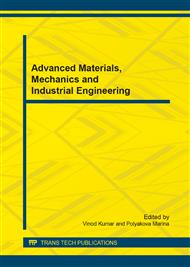p.23
p.28
p.33
p.38
p.43
p.47
p.51
p.55
p.60
Optimization of Heat Treatment in Manganese Steel by Taguchi Method
Abstract:
Manganese steels have extensively application in industries due to good resistance to wear, high work hardening capability with high toughness and ductility. Heat treatment is the main process to obtain desired mechanical properties and microstructure in this steel. The austenitizing temperature, the austenitizing time and the rate of quenching are the main factors in heat treatment. In this research, Taguchi analysis was used to determine optimal heat treatment for minimizing grain boundary carbide content with optimum hardness. Experimental variable chosen for this study included austenitizing temperature and time and the rate of quenching. In the optimization by Taguchi approach, L9(3)3 array, employing nine experiments, with three levels for each factor, was chosen for DOE. The austeitizing temperature and the cooling rate by changing in quenched solution were seen to have greatest influence on hardness of these steels.
Info:
Periodical:
Pages:
43-46
Citation:
Online since:
July 2014
Authors:
Price:
Сopyright:
© 2014 Trans Tech Publications Ltd. All Rights Reserved
Share:
Citation:


